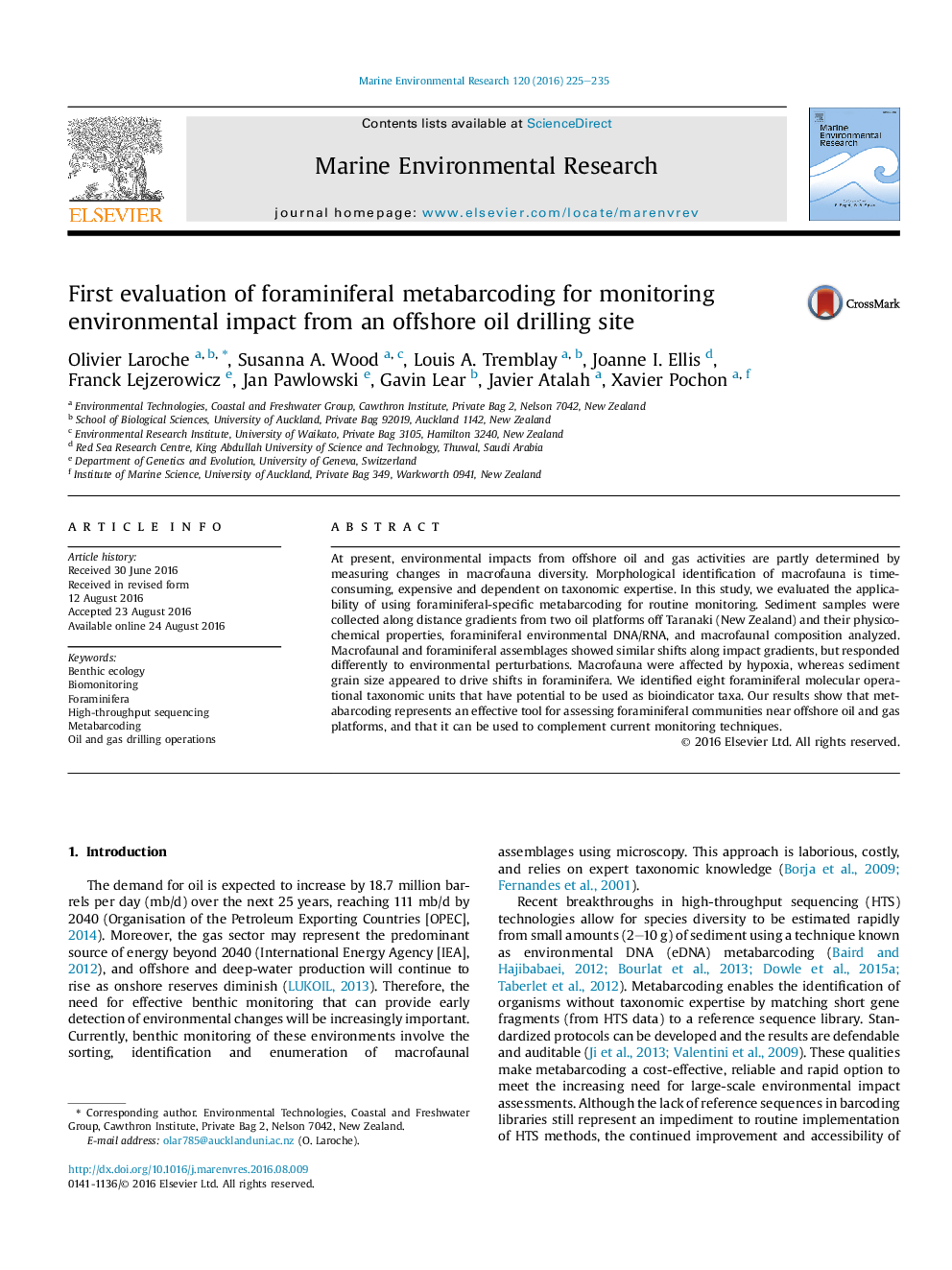| Article ID | Journal | Published Year | Pages | File Type |
|---|---|---|---|---|
| 4550595 | Marine Environmental Research | 2016 | 11 Pages |
•Macrofauna and foram assemblages showed similar shifts along impact gradients.•Grain size appeared to drive shifts in forams while hypoxia affected macrofauna.•Environmental RNA showed stronger relations with environmental variables than eDNA.•Foram metabarcoding offers complementary information to traditional monitoring.
At present, environmental impacts from offshore oil and gas activities are partly determined by measuring changes in macrofauna diversity. Morphological identification of macrofauna is time-consuming, expensive and dependent on taxonomic expertise. In this study, we evaluated the applicability of using foraminiferal-specific metabarcoding for routine monitoring. Sediment samples were collected along distance gradients from two oil platforms off Taranaki (New Zealand) and their physico-chemical properties, foraminiferal environmental DNA/RNA, and macrofaunal composition analyzed. Macrofaunal and foraminiferal assemblages showed similar shifts along impact gradients, but responded differently to environmental perturbations. Macrofauna were affected by hypoxia, whereas sediment grain size appeared to drive shifts in foraminifera. We identified eight foraminiferal molecular operational taxonomic units that have potential to be used as bioindicator taxa. Our results show that metabarcoding represents an effective tool for assessing foraminiferal communities near offshore oil and gas platforms, and that it can be used to complement current monitoring techniques.
